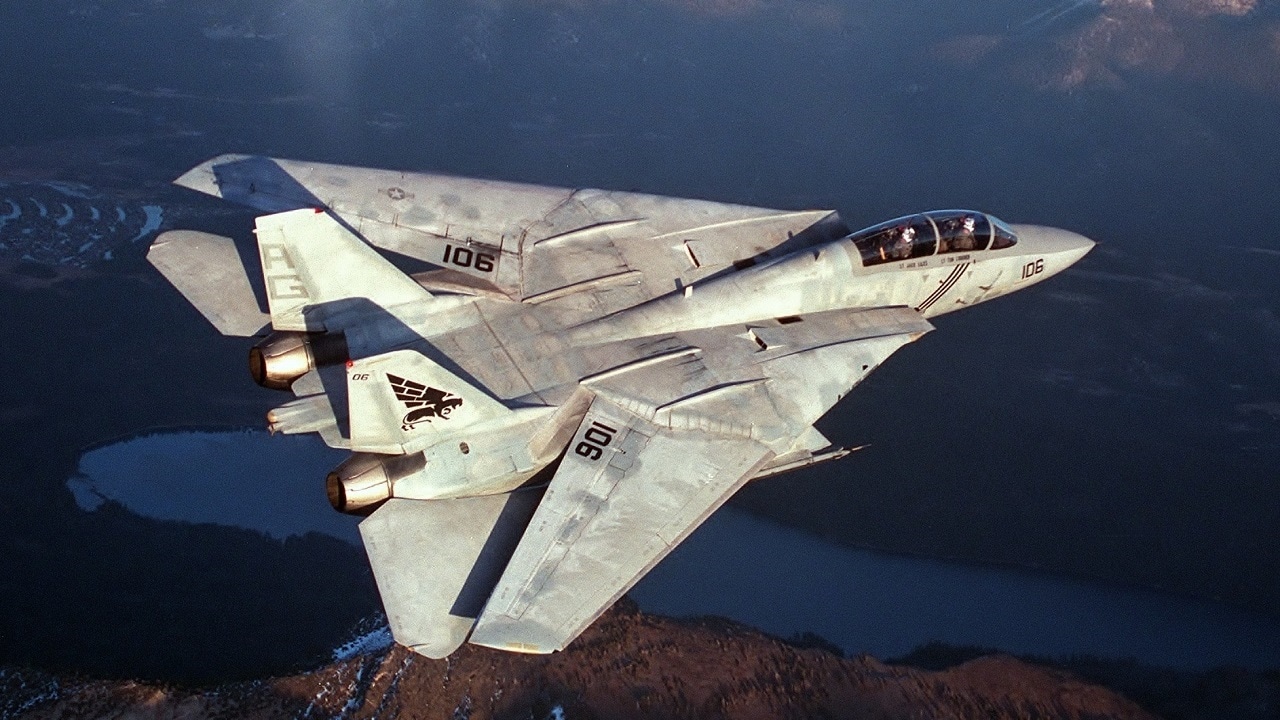Iran is flying the F-14 Tomcat, the same plane Tom Cruise piloted in the original Top Gun and Top Gun: Maverick. A complicated history leads to how Iran obtained the U.S.-made fighter and how they keep the old planes flying.
The American-made Northrop Grumman F-14 Tomcat fighter jet was already widely recognized when the platform made its debut in the 1986 film Top Gun. As the most powerful and lethal interceptor jet ever built at the time, the F-14 was rightfully the true icon of the classic blockbuster.
The Tomcat entered service with the U.S. Navy in 1972 and was meant to replace its predecessor, the F-4 Phantom fighter.
The Tomcat featured many improvements, including advanced dog-fighting capabilities, agility and the ability to perform both long-range interception and air-superiority missions.
Multirole Mission
This mission set became abundantly important in the 1970’s as U.S.-Soviet tensions began to escalate. Eager to garner support from the region, President Nixon visited the Iranian head of state, Mohamed Reza Shah, and set up the deal that would give Imperial Iran 79 operational Tomcats.
The F-14 fighter jet was the ideal aircraft for Iranian pilots, as it effectively challenged the Soviet MiG-25R Foxbat jets over Iranian territory. The Tomcat was the equivalent to the F-22 today, the most superior and advanced aircraft in the sky.
F-14: Aging in the Air
The U.S. soon regretted allowing Iran to become the only other country to operate the fourth-generation fighter jets. In 1979, monarchical rule was abruptly squashed in Iran when fundamentalist Shiite clerics seized control over the country under the leadership of Ayatollah Ruhollah Kohmeini.
The Islamic Revolution led to the collapse of U.S.-Iranian relations. Going forward, the U.S. would work tirelessly to try and ground their adversary’s jets.
However, the Islamic Republic of Iran continues to maintain its F-14 fleet despite the eight-year-long Iran-Iraq war and weapons embargos carried out by the U.S.
In fact, the Iranian Air Force has actually increased the number of operational airframes in the last few decades and has advanced the fighter jet’s electronics and weapons systems.
According to reports, Iran’s technicians may have developed nearly 300 separate modifications to the supersonic fighter. The remaining Iranian Tomcat fleet now showcases brand new wiring, avionics and sensors. Since the U.S. cut off Iran from acquiring its F-14 missiles, the regime modified its fleet to carry Soviet R-27 and R-73 missiles.
Recently, Iran has successfully reverse-engineered parts for the F-14 airframe and AIM-54 missiles, ultimately producing an effective native-grown variant of the original F-14 Phoenix missile.
Iran’s prioritization of self-sufficiency at this time supplemented by its weapons smuggling allowed the regime to keep the fighters operable. In 1988, an Iranian-American was arrested by federal agents in New York after being charged with attempting to purchase parts for the Tomcat’s engine.
A string of similar arrests followed closely behind, increasing in scope once the U.S. retired its last F-14s in 2006. The U.S. made a concerted effort to block Tomcat parts from falling into Iran’s hands.
Despite America’s efforts to wipe all remnants of the F-14 from the globe, Tehran continues to fly the aging fighters. In fact, Iran’s 40 remaining F-14 fighters make up the world’s sole active Tomcats. Additionally, these improved-upon supersonic jets remain some of the best fighters in the region.
Maya Carlin, now 1945’s Middle East Defense Editor, is an analyst with the Center for Security Policy and a former Anna Sobol Levy Fellow at IDC Herzliya in Israel. She has by-lines in many publications, including The National Interest, Jerusalem Post, and Times of Israel.
From 19FortyFive
Joe Biden Won’t Send F-16 Fighters to Ukraine

